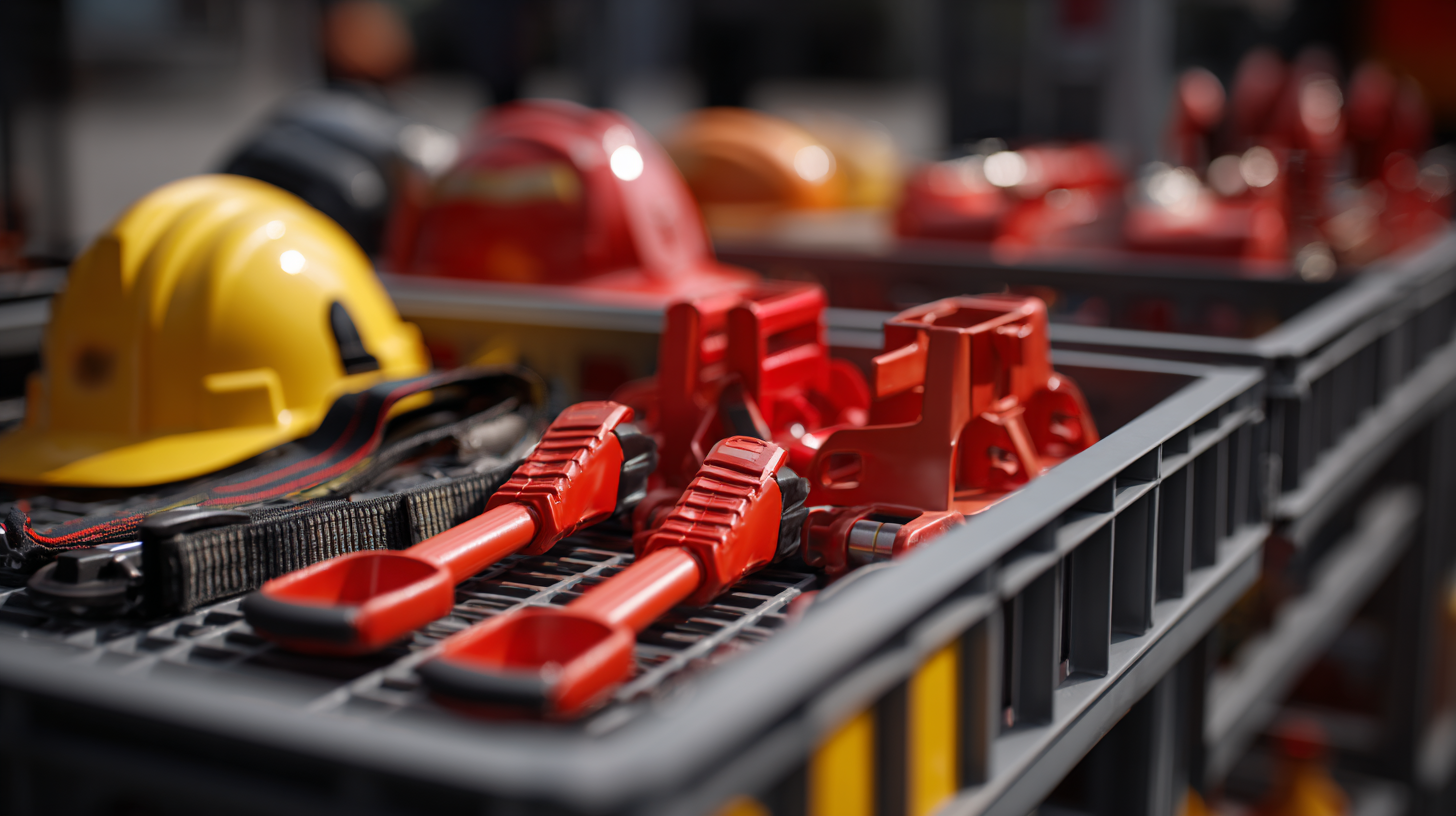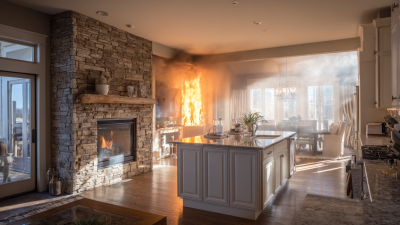Essential Fire Rescue Equipment Every Community Should Have for Safety
In the realm of public safety and emergency response, the availability of essential fire rescue equipment is paramount for effective firefighting and victim rescue operations. According to the National Fire Protection Association (NFPA), approximately 356,000 residential fires were reported in 2019, leading to an urgent need for communities to invest in proper fire rescue tools and training. The same report highlights that swift and effective response is crucial, often determining the difference between minor incidents and catastrophic losses. For this reason, equipping fire rescue teams with the right tools, such as hoses, aerial ladders, and personal protective equipment, is not just a matter of compliance but a critical element of community safety. As local governments and agencies assess their emergency readiness, identifying and procuring these essential fire rescue equipment pieces should be a top priority, ultimately enhancing the community's resilience in the face of fire-related emergencies.

Identifying Critical Fire Rescue Equipment for Community Preparedness
Fire safety and preparedness have become paramount for communities across the country, especially in light of recent devastating incidents. The tragic fire at Gabriel House serves as a stark reminder of the critical need for well-equipped fire rescue teams. Communities need to identify and invest in essential fire rescue equipment, such as portable water pumps, thermal imaging cameras, and personal protective gear, to enhance their emergency response capabilities. According to the National Fire Protection Association, effective fire response strategies can significantly reduce response times and ultimately save lives.
Tips for community preparedness include conducting regular fire drills and ensuring that all residents are familiar with emergency protocols. Additionally, establishing a local Community Emergency Response Team (CERT) can empower citizens with the skills needed to assist local fire departments during emergencies. Communities should actively seek funding opportunities to secure essential equipment and training programs that can fortify their firefighting capabilities.
In recent initiatives, local fire departments have received substantial grants aimed at improving emergency response infrastructure. Engaging in proactive planning and implementing effective fire response reforms can make a substantial difference in mitigating the impacts of fires, especially in vulnerable areas. By collaborating with local organizations and leveraging available resources, communities can bolster their resilience against fire threats, ensuring a safer environment for all residents.
Essential Fire Rescue Equipment Every Community Should Have for Safety
| Equipment | Purpose | Quantity Recommended | Maintenance Frequency |
|---|---|---|---|
| Fire Extinguisher | Put out small fires | 1 per 2500 sq ft | Annual check |
| First Aid Kit | Treat injuries on-site | 1 per community center | Monthly check |
| Fire Hose | Extinguish larger fires | 1 per fire truck | Biannual check |
| Smoke Detectors | Alert for smoke presence | 1 per floor | Monthly test |
| Fire Blankets | Smother flames | 1 per household | Annual review |
Prioritizing Fire-Fighting Tools for Effective Emergency Response
In any community, having the right fire-fighting tools is crucial for effective emergency response. Essential equipment includes fire extinguishers, hoses, and personal protective gear for firefighters. Fire extinguishers, which can be strategically placed in public spaces, allow residents to tackle small fires before they spread. Ensuring that these tools are easily accessible and regularly maintained is key to their effectiveness. Training community members on how to use them can empower individuals to act quickly and efficiently in emergency situations.
Moreover, investing in advanced firefighting tools, such as thermal imaging cameras and water supply systems, enhances response capabilities significantly. These tools enable firefighters to assess situations quickly, identifying hotspots and potential hazards in low visibility conditions. By prioritizing such technology, communities can not only safeguard lives and property but also improve their overall fire response strategies. Ultimately, the collaboration between local authorities and residents in establishing these essentials leads to a safer environment for all, reinforcing the community’s resilience to fire emergencies.
Essential Fire Rescue Equipment Every Community Should Have for Safety
This chart illustrates the essential fire rescue equipment that is crucial for effective emergency response in communities.
Essential Personal Protective Gear for Firefighters and Rescue Teams
When it comes to fire rescue operations, the safety of firefighters and rescue teams hinges significantly on the quality and availability of personal protective gear. Essential gear includes helmets designed to withstand heat and impact, ensuring head protection in hazardous environments. Fire-resistant jackets and pants are equally important, made from materials that not only resist flames but also wick away moisture, keeping rescuers dry and comfortable during intense situations.

In addition to clothing, firefighters rely on high-quality boots that provide both traction and insulation. Thermal gloves enhance grip while safeguarding hands from extreme temperatures. Moreover, advanced respiratory protection, such as self-contained breathing apparatus (SCBA), is crucial for allowing firefighters to navigate smoke-laden environments without jeopardizing their health. Together, these pieces of personal protective equipment not only enhance the safety of the rescue teams but also enable them to perform their critical duties effectively in life-threatening scenarios.
Creating an Inventory of Must-Have Fire Rescue Equipment for Local Stations
When it comes to fire safety, having the right rescue equipment is crucial for every community. A comprehensive inventory of must-have fire rescue equipment can significantly enhance the response capabilities of local fire stations. According to the National Fire Protection Association (NFPA), the average response time for fire emergencies is around 6 minutes, but with the right tools, communities can improve their efficiency and ultimately save lives.
 Essential equipment includes items like self-contained breathing apparatus (SCBA), fire hose, fire extinguishers, and thermal imaging cameras. The NFPA's report indicates that specialized gear, such as protective clothing and helmets, can reduce firefighter injuries by up to 50%. It's vital for each local station to assess their inventory regularly to ensure all equipment is up to date and properly maintained.
Essential equipment includes items like self-contained breathing apparatus (SCBA), fire hose, fire extinguishers, and thermal imaging cameras. The NFPA's report indicates that specialized gear, such as protective clothing and helmets, can reduce firefighter injuries by up to 50%. It's vital for each local station to assess their inventory regularly to ensure all equipment is up to date and properly maintained.
Tip: Communities should establish partnerships with local businesses for equipment donations or grants. This not only enhances the inventory but also fosters community engagement in fire safety.
In addition to the need for physical equipment, training is essential. The NFPA recommends periodic drills and training sessions to ensure that all personnel are familiar with the equipment and capable of using it effectively in emergencies. Communities should allocate resources both for equipment and training to create a robust fire rescue system.
Tip: Involve community members in fire safety education programs to raise awareness and preparedness, which can further empower residents to act in emergencies.
Developing a Community Training Program for Operating Fire Rescue Tools
Developing a comprehensive community training program for operating fire rescue tools is essential for enhancing public safety and ensuring effective emergency response. According to the National Fire Protection Association (NFPA), over 1.3 million fires were reported in the U.S. in 2020, necessitating a well-prepared response team.
Community training initiatives can significantly improve the readiness of volunteers and first responders, enabling them to handle fire rescue equipment adeptly. Research indicates that communities with trained personnel experience up to a 50% reduction in response time during emergencies, reflecting the critical nature of these training programs.
Incorporating hands-on workshops with simulated fire rescue scenarios can bolster the understanding of equipment use, such as hydraulic rescue tools, fire suppression systems, and personal protective gear. A report from the International Association of Fire Fighters highlights that regular training enhances not only the skills but also the confidence of individuals in high-pressure situations. By fostering collaboration between local fire departments and community organizations, we can ensure that every member of the community is not only equipped but also trained to use essential fire rescue tools effectively, paving the way for a safer environment for all.
Related Posts
-

What Makes the Best Fire Extinguisher Essential for Global Buyers
-

Unique Styles of Fire Extinguishers That Excel in Equipment Protection
-

Top 10 Fire Extinguishers from Chinese Manufacturers at the 137th Canton Fair
-

How to Enhance Your Home’s Fire and Safety Measures Effectively
-

How to Choose the Right Fire Warden Equipment for Your Facility's Safety Needs
-

Innovative Fire Safety Products You Might Not Know About
